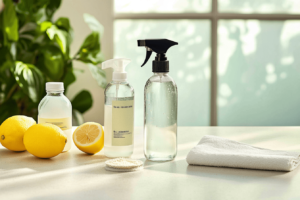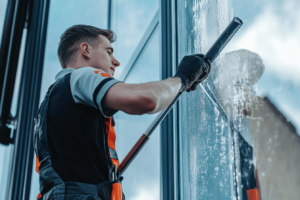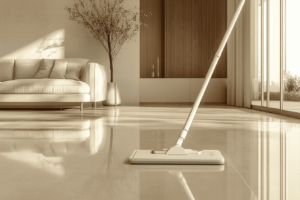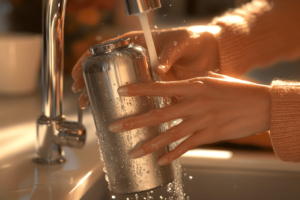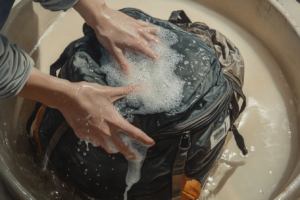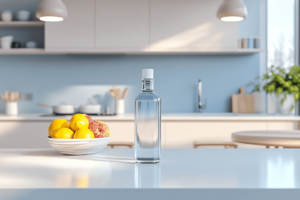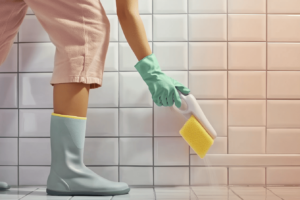Every homeowner knows the struggle of keeping their toilet clean and free from limescale. This hard, chalky deposit can quickly accumulate, leaving unsightly stains that are tough to remove. Not only does limescale affect the appearance of your toilet, but it can also hinder its functionality over time. Fortunately, whether you’re tackling a mild case or a toilet bowl severely affected by limescale, there are effective solutions at hand. From DIY methods to professional cleaning services like Wecasa, this guide will walk you through the best ways to remove limescale from your toilet, ensuring it stays sparkling clean and fully operational.
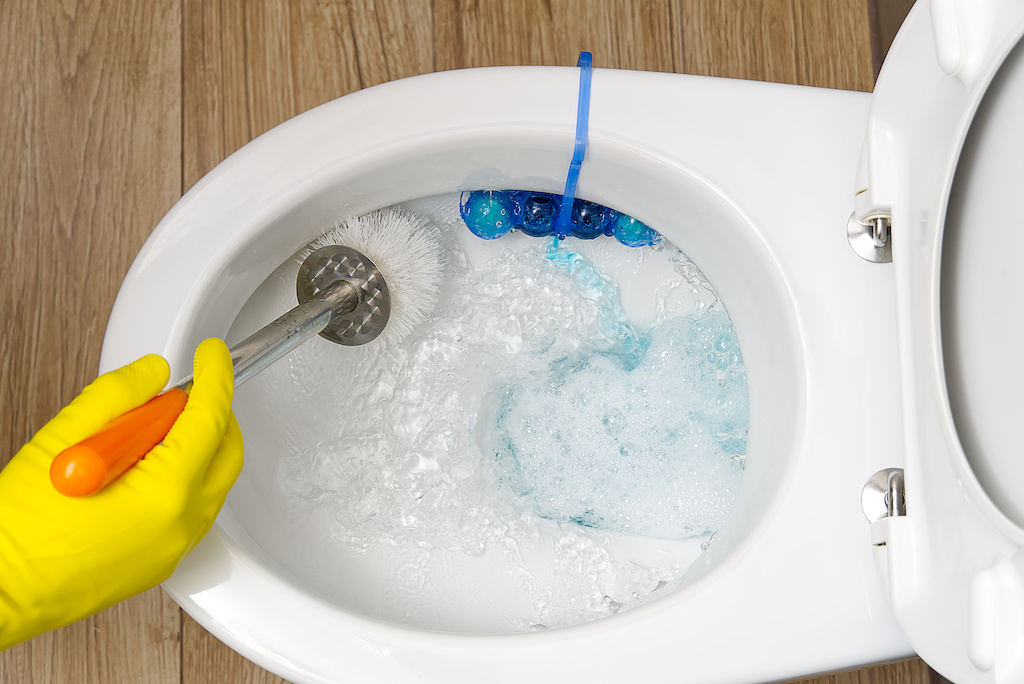
Understanding Limescale and Its Effects on Your Toilet
What Is Limescale?
Limescale is a hard, white, chalky deposit primarily made of calcium carbonate. It forms when water with high mineral content evaporates, leaving behind the minerals which then solidify. In toilets, limescale typically accumulates inside the bowl and under the rim, but it can also affect pipes and plumbing.
Why Removing Limescale Is Crucial for Toilet Maintenance
Allowing limescale to build up can lead to a host of problems. It can corrode the plumbing, reduce the efficiency of flushing, and create a breeding ground for bacteria, leading to unpleasant odours. Regular removal of limescale is essential for maintaining both the hygiene and functionality of your toilet.
DIY Methods to Remove Limescale from Toilet
Vinegar and Baking Soda Solution
One of the most effective natural solutions for limescale removal involves using white wine vinegar and baking soda.
Here’s how:
- Pour a cup of vinegar into the toilet bowl, making sure to cover the sides.
- Add a cup of baking soda, followed by another cup or two of vinegar. Expect a fizzy reaction.
- Let the mixture sit for about 10 minutes, then scrub the bowl with a toilet brush, focusing on areas with limescale deposits.
- Flush the toilet to rinse away the residue.
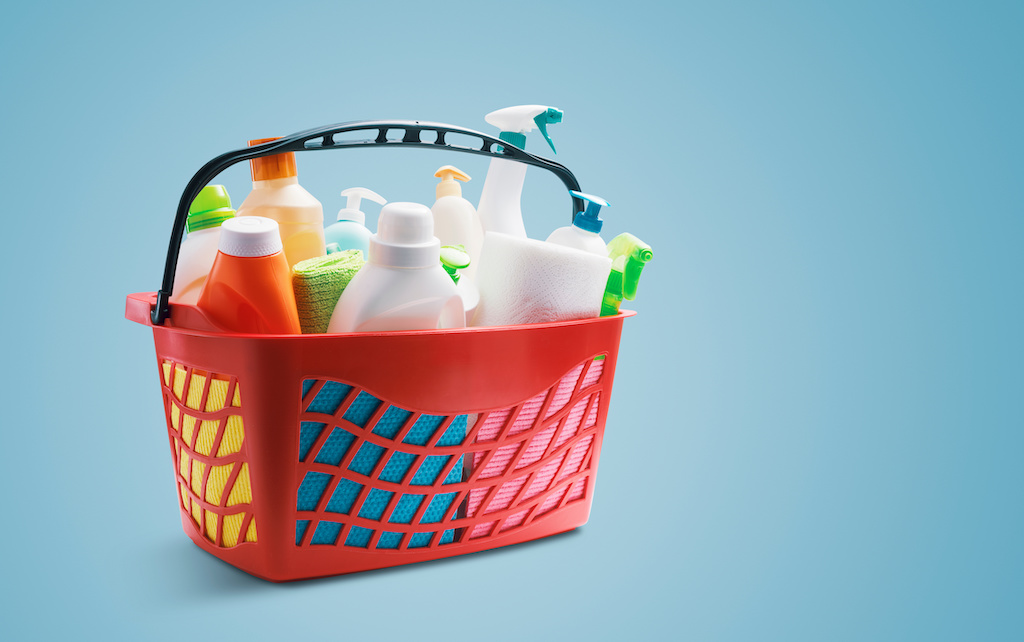
Commercial Limescale Removers
For stubborn limescale, commercial removers can be effective. Choose a product designed for toilets, and follow the manufacturer’s instructions carefully. Always ensure the bathroom is well-ventilated when using chemical products.
The Coca-Cola Method
Surprisingly, Coca-Cola can help dissolve limescale:
- Pour a large bottle of cola into the bowl, ensuring it covers all the stained areas.
- Leave it overnight to allow the acids in the cola to break down the limescale.
- Scrub the toilet the next morning and flush.
Preventive Measures to Avoid Limescale Buildup
- Regularly clean your toilet with a mild cleaner.
- Consider installing a water softener to reduce mineral content in the water.
Professional Solutions for Limescale Removal
When to Call the Professionals
If DIY methods don’t resolve your limescale issues, it’s time to call in professionals. Severe buildup, especially below the waterline or in pipes, may require professional-grade cleaners and techniques.
Benefits of Using Professional Cleaning Services
Professional cleaners, such as those from Wecasa, are equipped with the cleaning tools and expertise necessary to remove even the toughest limescale. Hiring a professional not only ensures a deep clean but also saves you time and effort.
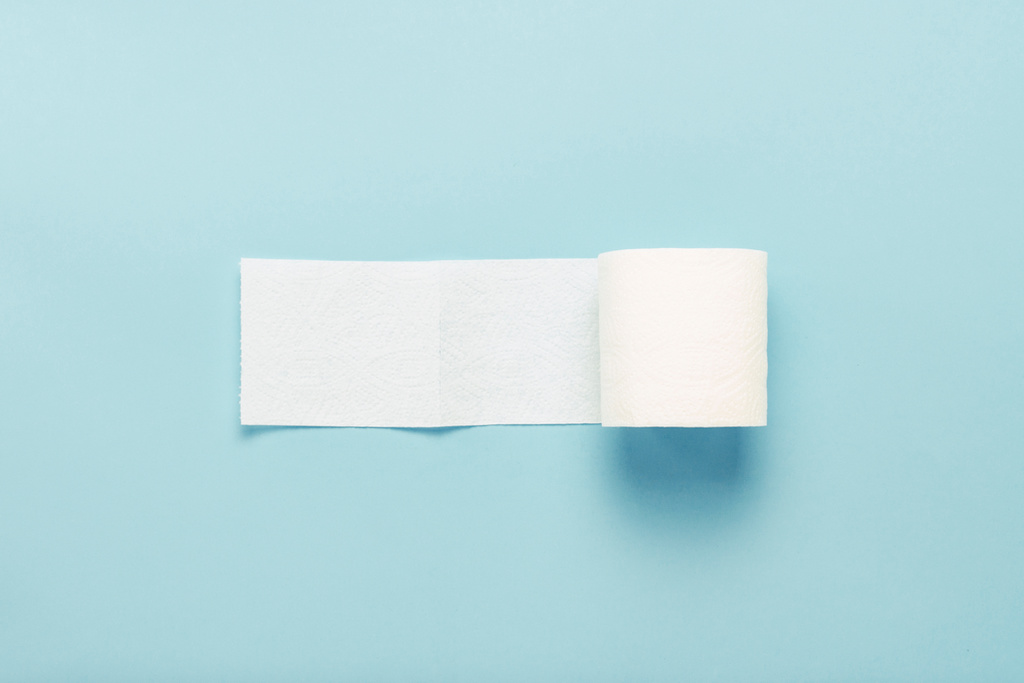
Step-by-Step Guide to Removing Limescale from Toilet Bowl
Materials Needed
- Gloves
- Vinegar/Baking soda or commercial limescale remover
- Toilet brush
- Pumice stone (for stubborn stains)
The Process
- Don protective gloves to safeguard your hands.
- Depending on the chosen method, apply your cleaner of choice to the affected areas. If using vinegar and baking soda, follow the steps outlined above.
- For commercial cleaners, apply as directed on the product label.
- Allow the cleaner to sit for the specified time.
- Use a toilet brush to scrub the bowl thoroughly. A pumice stone can be gently used for persistent stains, but be cautious to avoid scratching the porcelain.
- Flush the toilet to rinse away the cleaner and the loosened limescale.
FAQs on Removing Limescale from Toilet
- What’s the best way to remove limescale from a toilet bowl? Vinegar and baking soda are highly effective for mild to moderate buildup, while commercial removers or professional cleaning services may be necessary for severe cases.
- How often should I clean my toilet to prevent limescale? Regular cleaning every 1-2 weeks can prevent limescale from accumulating.
- Can limescale cause damage to my toilet? Yes, over time, limescale can corrode fixtures and hinder flushing efficiency.
Removing limescale from your toilet is crucial for maintaining both its appearance and functionality. While various DIY methods can be effective for minor buildup, severe cases may require the expertise of professional cleaning services. Wecasa offers specialised cleaning solutions that tackle limescale, ensuring your toilet remains in pristine condition. Regular maintenance and the occasional professional cleaning can keep limescale at bay, making your bathroom a cleaner, more hygienic space.
Don’t let limescale take over your toilet. Book a professional cleaning service with Wecasa today and enjoy a sparkling clean, limescale-free bathroom. Let us handle the hard work, so you can focus on what truly matters.




